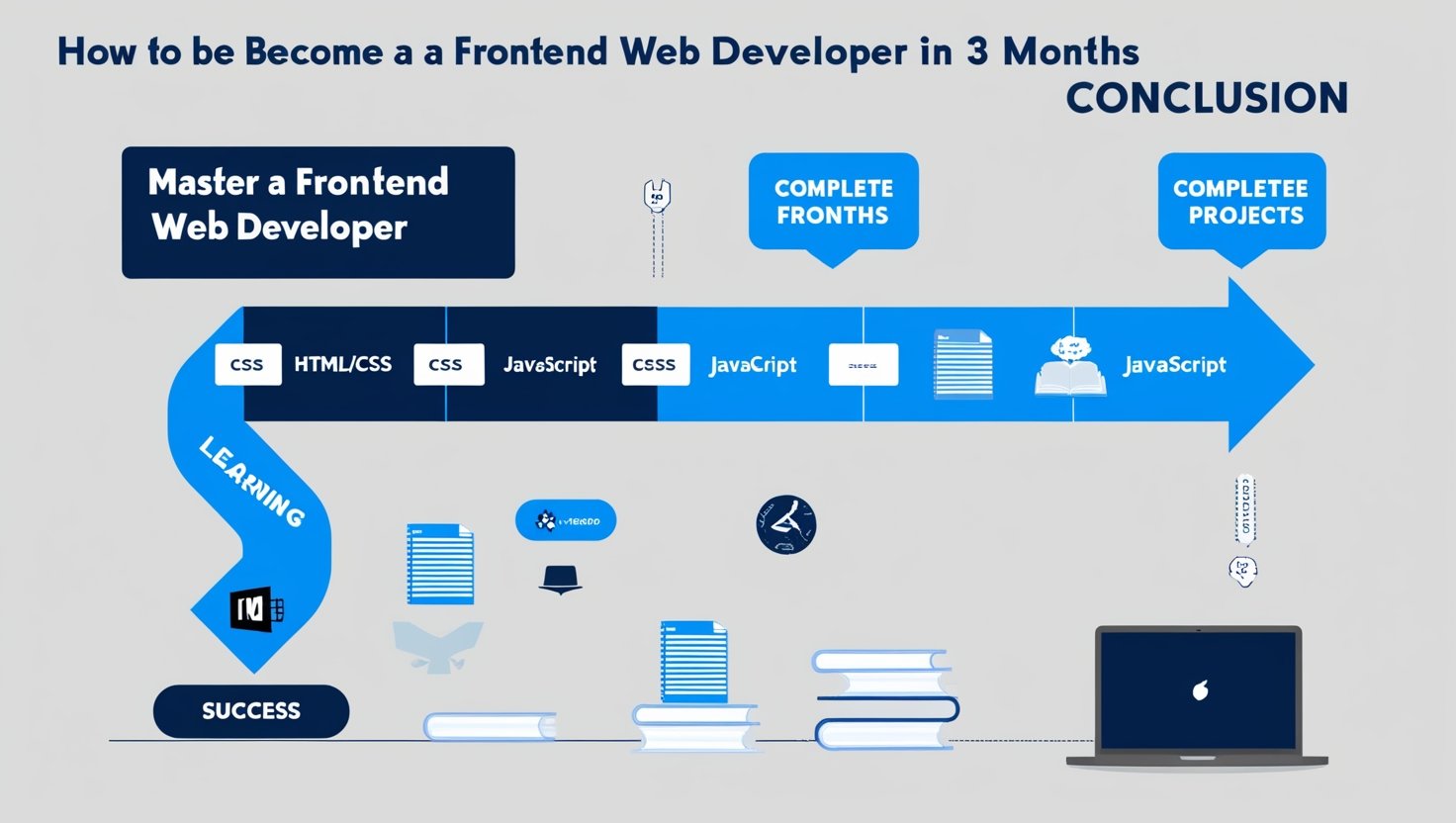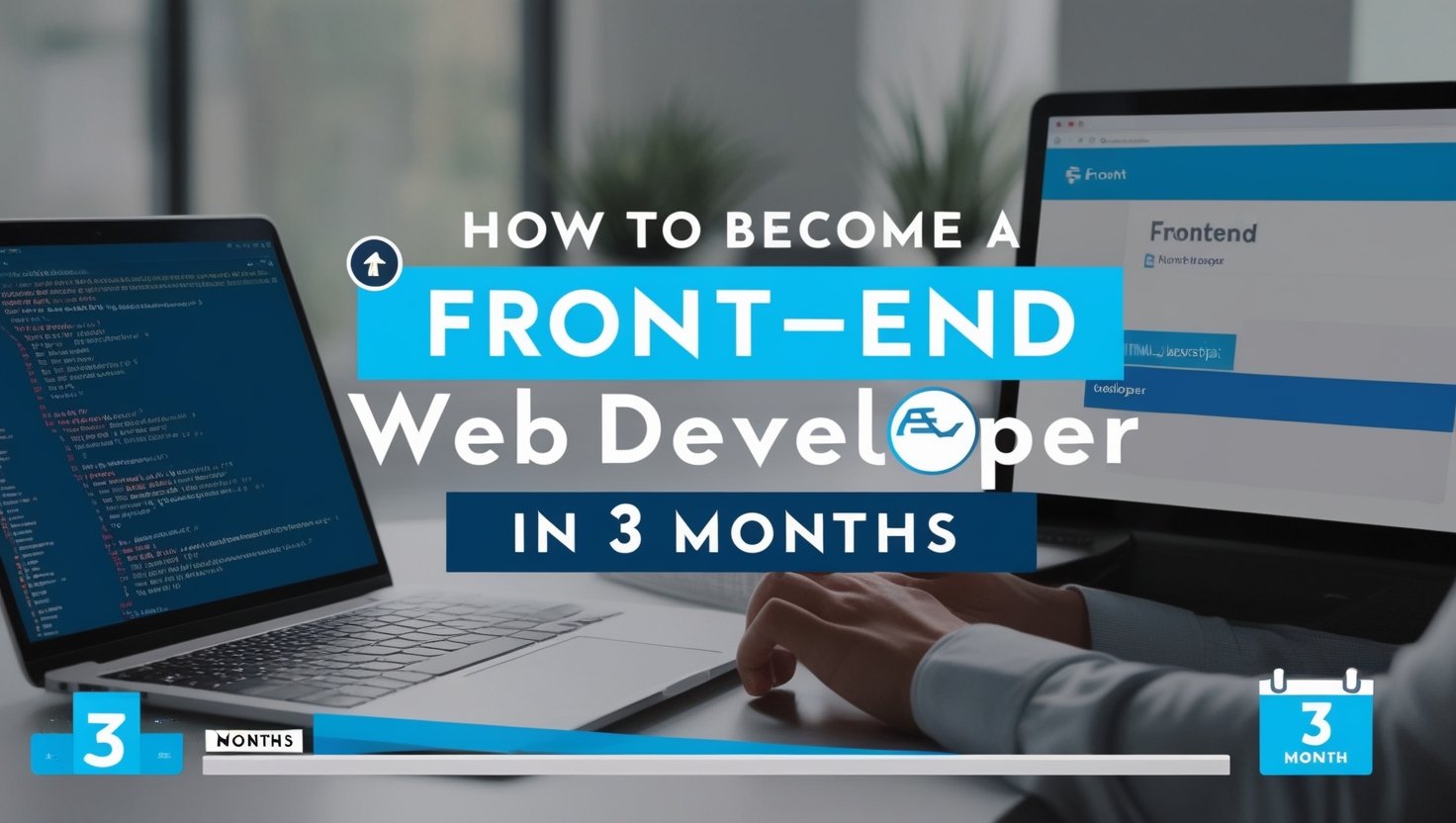Becoming a frontend web developer within 3 months is an ambitious but achievable goal if approached with discipline, consistency, and the right learning techniques. Frontend development requires a combination of creativity, logic, and technical skills. Below is a step-by-step guide to help you reach this goal, incorporating actionable steps, project ideas, learning methods, motivational strategies, and even psychological tips to enhance your learning process.
Month 1: Mastering the Basics
Step 1: Understanding HTML & CSS
- HTML (HyperText Markup Language): It is the backbone of any webpage, defining its structure.
- CSS (Cascading Style Sheets): It is used to style HTML elements, making web pages visually appealing.
Learning Resources:
- Books:
- HTML and CSS: Design and Build Websites by Jon Duckett (Great for visual learners).
- Learning Web Design by Jennifer Robbins.
- Free Resources:
Practice Projects:
- Create a simple personal portfolio website. This project will help you get hands-on experience with HTML and CSS.
- Build a basic landing page for a fictional product.
Motivation Tips:
- Set small, daily learning targets. A SMART (Specific, Measurable, Achievable, Relevant, Time-bound) goal could be “Learn 2 new HTML tags and 1 CSS concept every day.”
- Track your progress by maintaining a development log.
Psychological Insight:
- Chunking Method: Break your learning into smaller, manageable parts. The human brain learns better when it processes information in “chunks.”
Month 2: Learning JavaScript & DOM Manipulation
Step 2: Master JavaScript
JavaScript (JS) is the programming language that makes websites interactive. Mastering it will take time, but focus on core concepts such as:
- Variables, Data Types, and Operators
- Loops, Conditional Statements
- Functions, Arrays, and Objects
Learning Resources:
- Books:
- Free Resources:
- JavaScript30 by Wes Bos (A free 30-day JavaScript challenge).
- JavaScript Basics on freeCodeCamp
Practice Projects:
- Create a to-do list app using JavaScript.
- Build a simple calculator with basic arithmetic operations.
Motivation Tips:
- Reward yourself after completing a small project. Take a short break, or enjoy a treat.
- Pair learning with practical coding exercises; this is a proven way to retain information.
Psychological Insight:
- Spacing Effect: Spread your learning over several days rather than cramming. Your brain retains information longer when spaced out over time.
Month 3: Frameworks, Version Control, and Projects
Step 3: Introduction to Frontend Frameworks (Bootstrap, Tailwind CSS)
While knowing HTML, CSS, and JavaScript is important, frameworks like Bootstrap and Tailwind CSS help you design responsive and modern websites quickly.
- Bootstrap: A CSS framework that provides ready-made components like navbars, buttons, and grids.
- Tailwind CSS: A utility-first framework that provides more flexibility in styling.
Step 4: Learn Git and GitHub
Version control is essential for every developer to track changes and collaborate with others. You’ll want to:
- Learn Git commands to commit, push, and pull code.
- Use GitHub to host your projects and showcase your work to potential employers.
Learning Resources:
- Books:
- Bootstrap 4 Quick Start by Jacob Lett.
- Git for Humans by David Demaree.
- Free Resources:
Practice Projects:
- Create a responsive portfolio website using Bootstrap.
- Clone a well-known website like Google or Facebook’s homepage to test your CSS framework skills.
Motivation Tips:
- Share your projects on platforms like GitHub, Twitter, or LinkedIn. Getting feedback and engaging with a community will motivate you to improve.
- Consider participating in coding challenges like Hacktoberfest or Codewars to keep you engaged.
Psychological Insight:
- Flow State: Engage in coding sessions that are challenging but not too hard, aiming for a flow state where you lose track of time because you’re fully immersed.
Project Focus for Your Portfolio
To stand out as a developer, your portfolio should contain diverse projects demonstrating your expertise. Here are some project ideas you can complete by the end of 3 months:
- Personal Portfolio Website: A polished and responsive site showcasing your work and skills.
- Weather App: Use APIs to fetch weather data and display it dynamically.
- E-commerce Product Page: Simulate a product page with interactive elements like a shopping cart.
- Blog Platform: A fully functional blog with CRUD (Create, Read, Update, Delete) functionalities using JavaScript and local storage or Firebase.
Final Week: Apply for Jobs & Continue Learning
Step 5: Applying for Jobs
Once your portfolio is complete, start applying for junior frontend developer positions. Tailor your resume and showcase the projects you’ve built over the past 3 months. Use websites like LinkedIn, Indeed, and AngelList to find remote and local jobs.
Learning Resources for Further Growth:
- Frontend Masters (Paid): A learning platform that offers in-depth courses on advanced frontend topics.
- The Complete Front-End Developer Roadmap by Andrei Neagoie (Udemy course).
Motivation Tips:
- Networking with other developers via Twitter, LinkedIn, or online forums can provide guidance and open doors for opportunities.
- Be prepared for rejection. It’s normal at the start, but persistence is key.
Psychological Insight:
- Growth Mindset: Adopt a mindset that values effort over innate ability. Challenges are an opportunity to grow. Remember, skills are built through consistent practice.
Scientific Learning Techniques for Web Development
- Active Recall: Instead of passively reading, actively write code from memory. Test yourself by explaining concepts aloud (even if you’re alone).
- Feynman Technique: Simplify complex topics by teaching them to someone else or writing a blog post. This method solidifies your understanding.
- Pomodoro Technique: Study or code for 25 minutes, then take a 5-minute break. This helps combat burnout and maintain focus.

Conclusion: Summary and Next Steps
In 3 months, you will:
- Master the fundamentals of HTML, CSS, and JavaScript.
- Build 3–4 projects that showcase your skills.
- Learn version control (Git and GitHub).
- Get comfortable with frontend frameworks (Bootstrap, Tailwind).
- Create a portfolio and apply for jobs or internships.
Key Takeaway: Consistency is more important than speed. If you dedicate 2–3 hours every day, you can confidently call yourself a frontend developer after 3 months.
| Final Note: Keep learning even after 3 months. This is just the start! Frontend development is constantly evolving, so a lifelong learning mindset will ensure long-term success. |
Good Luck!




